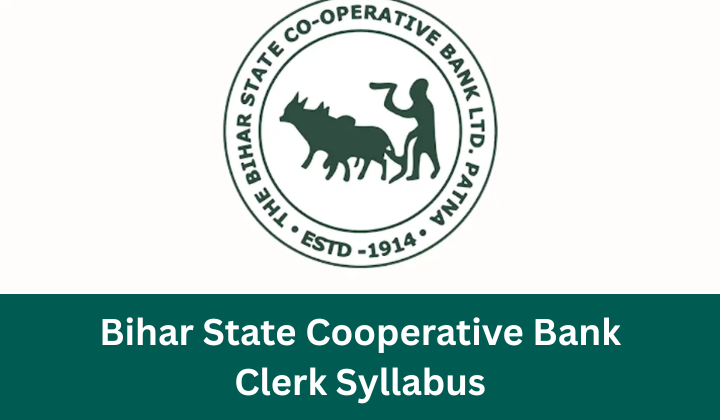The Bihar State Cooperative Bank has released the latest notification for the Clerk posts, opening a great opportunity for candidates across Bihar. If you are planning to prepare for this exam, your first step should be understanding the syllabus and exam pattern. In this article, we provide a detailed overview of the Bihar State Cooperative Bank Clerk Syllabus 2025 along with the exam pattern to help you get started in the right direction.
Bihar State Cooperative Bank Clerk Syllabus 2025 and Exam Pattern
The Bihar State Cooperative Bank Clerk Exam 2025 is conducted in two stages Prelims and Mains. The Prelims includes three sections English Language, Reasoning, and Quantitative Aptitude. Those who qualify move on to the Mains, which consists of five sections Reasoning, Computer Knowledge, General Awareness, English/Hindi Language, and Quantitative Aptitude. The exam pattern is quite similar to other standard banking exams, making it easier for banking aspirants to prepare
Also Read, Bihar State Cooperative Bank Result & Cut Off 2025 Out
Bihar State Cooperative Bank Clerk Exam Pattern 2025
The Bihar State Cooperative Bank Clerk Exam Pattern varies for the Prelims and Mains stages. In the Preliminary Exam, questions are asked from three subjects, while the Mains Exam includes five different sections. To help candidates understand the structure better, the detailed exam patterns for both Prelims and Mains are given below.
Prelims
The SBI CBO Preliminary Exam is divided into three sections: English Language, Reasoning, and Quantitative Aptitude. Each section has a separate time limit of 20 minutes. The exam is conducted for a total of 100 marks and lasts for 60 minutes. Check the detailed pattern below:
| Subjects | No. of Questions | Maximum Marks | Duration |
Medium of Exam
|
| English Language | 30 | 30 | 20 Minutes | English |
| Reasoning Ability | 35 | 35 | 20 Minutes | English & Hindi |
| Quantitative Aptitude | 35 | 35 | 20 Minutes | English & Hindi |
| Total | 100 | 100 | 60 Minutes |
Mains
The SBI CBO Mains Exam consists of five sections covering Reasoning, Computer Knowledge, General Awareness, Language Skills, and Quantitative Aptitude. The paper includes 200 questions for 200 marks, and the total duration is 120 minutes. Candidates can choose between English or Hindi for most sections, except for the English Language section. Here is the detailed exam pattern:
| Subjects | No. of Questions | Maximum Marks | Duration |
Medium of Exam
|
| Reasoning | 40 | 40 | 30 Minutes | English & Hindi |
| Computer Knowledge | 40 | 40 | 20 Minutes | English & Hindi |
| General Awareness | 40 | 40 | 20 Minutes | English & Hindi |
| English/ Hindi Language | 40 | 40 | 20 Minutes | English/ Hindi |
| Quantitative Aptitude | 40 | 40 | 30 Minutes | English & Hindi |
| Total | 200 | 200 | 120 Minutes |
Bihar State Cooperative Bank Clerk Syllabus
The Bihar State Cooperative Bank Clerk Exam is conducted in two phases Prelims and Mains. Candidates must clear the sectional as well as overall cut-off to qualify for the Mains. To succeed, candidates should focus on topic-wise preparation, understand the exam pattern, and practice regularly for improved accuracy and time management.
Bihar State Cooperative Bank Clerk Syllabus Prelims
The Prelims Exam includes three sections English Language, Reasoning Ability, and Quantitative Aptitude with a total of 100 marks and a duration of 60 minutes.
English Language
The English section of the Bihar State Cooperative Bank Clerk exam includes a variety of topics such as Reading Comprehension, Fillers, Sentence-Based Errors, Vocabulary, Cloze Test, and Error Detection. Other important areas include Sentence Improvement, Word Swap (3-4 words), Word and Sentence Rearrangement, Para jumbles, Column-Based questions, Idioms & Phrases, Word Usage, and Connectors or Starters. Regular practice in these topics helps improve accuracy and speed.
Reasoning Ability
The Reasoning section of the Bihar State Cooperative Bank Clerk exam covers various topics including Puzzles, and Seating Arrangements. Other key areas include Inequality, Distance & Direction, Coding-Decoding, Blood Relations, Syllogism, and different types of Series (Alpha-numeric, Symbol, Word, Number, Digit, Letter). Additional topics are Order & Ranking, Word/Number Pairing, Word Formation, Odd One Out, and Mixed Operation-based Word/Number questions. Regular practice and logical thinking are essential for mastering this section.
Quantitative Aptitude
The Numerical Ability section of the Bihar State Cooperative Bank Clerk exam includes topics like Simplification and Approximation based on BODMAS, squares, cubes, roots, and percentages. It also covers Number Series (missing/wrong), Inequality (linear/quadratic), and Quantity Comparison. Other important areas are Ratio & Proportion, Percentage, Number System, HCF & LCM, Average, Age, Partnership, Mixture & Alligation, SI & CI, Time & Work, Pipes & Cisterns, Profit & Loss, Speed-Time-Distance, Boats & Streams, Mensuration (2D & 3D), Probability, and Permutation & Combination. Data Interpretation (Tables, Pie Charts, Line/Bar Charts, Mixed DI, Caselets) and Data Sufficiency are also key components.
Bihar State Cooperative Bank Clerk Syllabus Mains
The Mains Exam comprises Reasoning Ability, Computer Knowledge, General Awareness, English Language/Hindi Language, and Quantitative Aptitude, totaling 200 marks.
Reasoning
The Reasoning section of the Bihar State Cooperative Bank Clerk Mains exam includes advanced topics like Seating Arrangements. Miscellaneous reasoning involves Coded Inequality, Distance & Direction, Coded Coding-Decoding, Coded Blood Relations, Input-Output, Resultant reasoning, Syllogism, various Series types, Order-Ranking, Data Sufficiency, and Word/Number-based logic. Logical Reasoning topics such as Statement-Assumption, Statement-Inference, and Statement-Conclusion are also key for testing analytical thinking.
Computer Knowledge
The Computer section of the Bihar State Cooperative Bank Clerk exam covers a broad range of fundamental topics. It includes the History and Generations of Computer Development, an Introduction to Computers, and Types of Computers. Candidates should also be familiar with High-Level Programming Languages, Computer Arithmetic, and various Hardware components such as Input, Output, and Storage Devices. Understanding Computer Memory, Software (both System and Application Software), and Database Management Systems is essential. Additionally, topics like Computer Networks, the Internet, and Computer Security play a crucial role in the syllabus, requiring both conceptual clarity and practical awareness.
General Awareness
The General Awareness section for the Bihar State Cooperative Bank Clerk exam covers a wide range of topics including National, International, and State Current Affairs, Sports News, and Central Government Schemes. Candidates should stay updated on Agreements/MoUs, Books & Authors, Summits & Conferences, Defense, and Science & Technology News. Banking and Financial Awareness, Static GK, Recent RBI Circulars, and Business & Economy updates are crucial. Additionally, focus on Important Days, Obituaries, Appointments, Awards & Honours, Union Budget 2025-26, Economic Survey 2025-26, and key Ranks, Reports, and Indexes for comprehensive preparation.
Quantitative Aptitude
The Quantitative Aptitude section of the Bihar State Cooperative Bank Clerk exam includes Approximation (BODMAS, squares, roots, indices, fractions, percentages), and various types of Number Series such as missing, wrong, double pattern, and statement-based series. Inequality questions may be based on quadratic equations and quantity comparisons. Arithmetic covers a wide range of topics including Ratio & Proportion, Percentage, Number System, Algebra, Average, Age, Partnership, Mixture & Alligation, SI & CI, Time & Work, Pipes & Cisterns, Profit & Loss, Speed-Time-Distance, Boats & Streams, Trains, Mensuration, Probability, and Permutation & Combination. Data Interpretation is extensive, featuring Table, Pie, Line, Bar, Mixed, Radar, and Caselet-based DIs, along with new pattern types like Scatter, Funnel, and Sunburst charts. Data Sufficiency questions are also asked based on two or three statements.




 NABARD Grade A Syllabus and Exam Pattern...
NABARD Grade A Syllabus and Exam Pattern...
 ECGC PO Syllabus & Exam Pattern 2025...
ECGC PO Syllabus & Exam Pattern 2025...
 CAIIB Syllabus and Exam Pattern 2025, Do...
CAIIB Syllabus and Exam Pattern 2025, Do...








